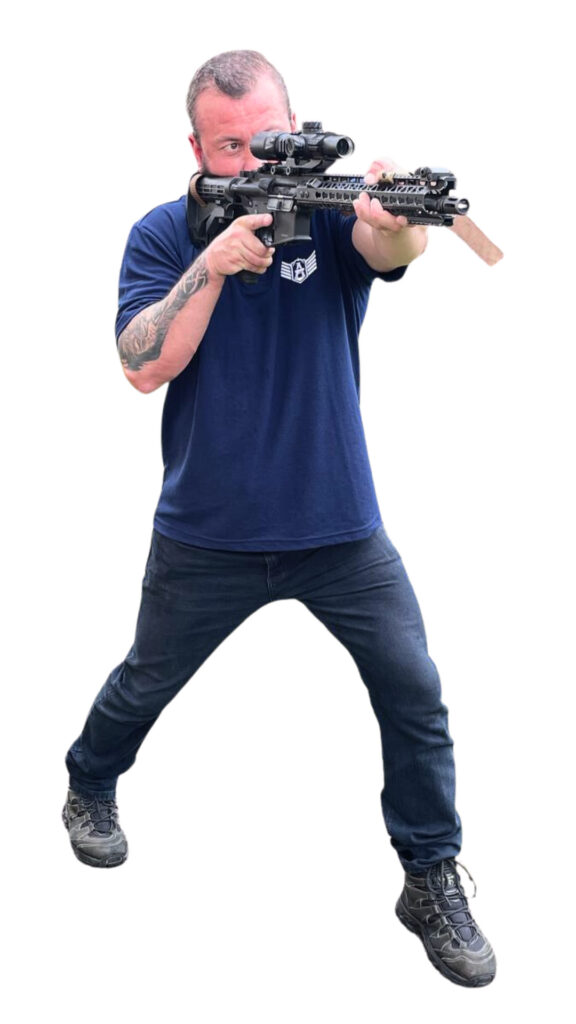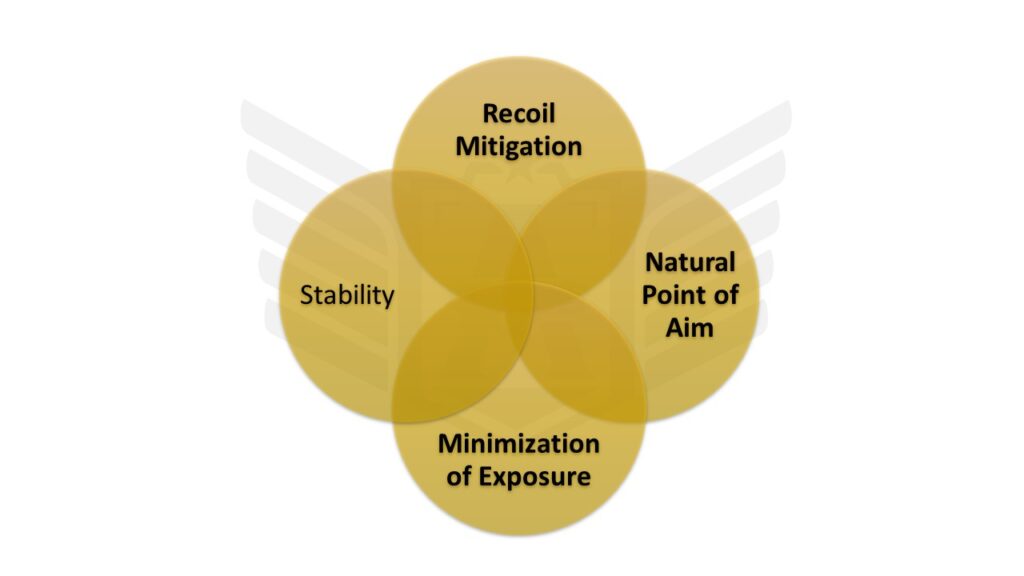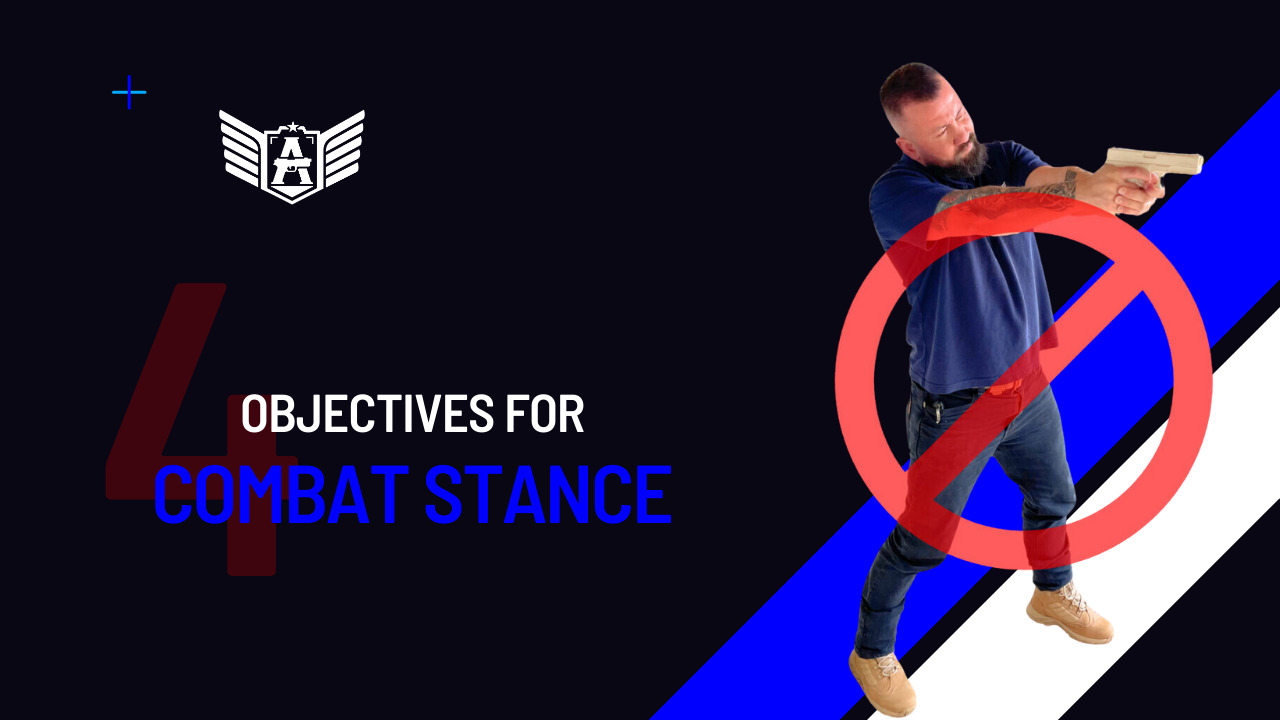The shooting fundamentals consist of 6 processes, encompassing factors essential for success in marksmanship. In other words, understanding the shooting fundamentals enables the shooter to identify procedural errors leading to a shot miss, allowing corrections in the subsequent attempt, forming a cycle of feedback and improvement.

The shooting fundamentals include stance, grip, sight alignment, breathing, trigger control, and technical follow-through. In today’s discussion, we’ll focus on the stance fundamental, specifically applied to combat. A good stance should be capable of fulfilling at least (but not exclusively) 4 objectives, which we will discuss below:
(1) Recoil Mitigation – A good stance should be aggressive enough, in conjunction with other fundamentals, to mitigate recoil, enabling better firing rates. Remember: those deserving to be shot deserve to be shot multiple times. (I often use the term “shot to hell” with my students, but it’s not suitable for all audiences).
(2) Minimization of Exposure – When using barricades, the goal is to prevent your enemy or enemies from seeing you while you maintain visibility of them. This objective is impossible to achieve without executing a good stance.

(3) Natural Point of Aim – Aligning the body with the target minimizes the use of the aiming device, allowing for faster and more natural engagement.
(4) Stability – Of course, with a stable stance, the alignment between the weapon and the target becomes much more manageable.
– Lucas, but will I have time to think and do all of this when SHTF?
Calm down, young Padawan. Sometimes yes, you will. For other times, we need to talk about item (5) Adaptability and Transferability. But that’s for another post.





